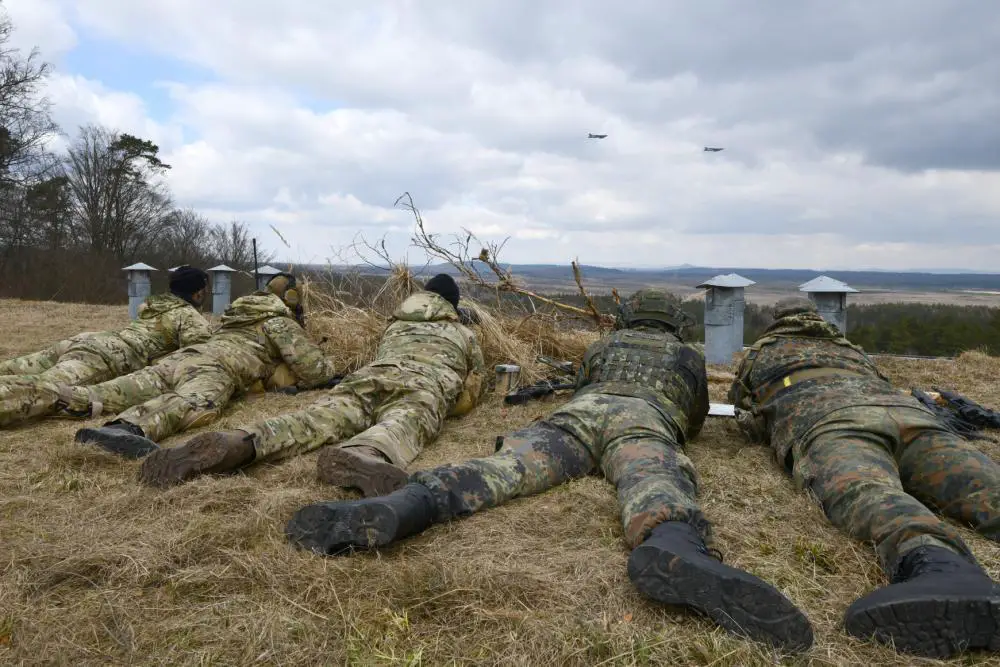German and United States (U.S.) Joint Terminal Attack Controllers (JTACs) recently cooperated with U.S. B-52s, underlining a shared commitment to NATO’s defensive capabilities and reinforcing Alliance cohesion. On 21 March, JTACs based in Germany executed Close Air Support (CAS) training missions with the B-52s. Various Allied JTACs have had the opportunity to integrate with the B-52s during the current Bomber Task Force (BTF) mission. In early March, B-52s flew over central Europe to meet up with Romanian JTACs, providing crucial training for NATO Allies in the Black Sea region. On another integration opportunity, the B-52s supported a routine, pre-planned CAS training event at Grafenwoehr Training Area, Germany, March 4.
Joint Terminal Attack Controller (JTAC) is the term used in the United States Armed Forces and some other military forces for a qualified service member who directs the action of combat aircraft engaged in close air support and other offensive air operations from a forward position. The term that is used in most other countries, as well as previously in the US and in the relevant NATO standard is Forward Air Controller. The term became effective in the US on September 3, 2003 with the publishing of Joint Publication (JP) 3-09.3 Close Air Support. A qualified and current JTAC is recognized across the U.S. Department of Defense as being capable and authorized to perform terminal attack control.

Such examples of air-to-ground integration demonstrate the B-52s inherent speed, flexibility, and range as a strategic bomber. B-52s from the U.S. 5th Bomb Wing, Minot Air Force Base, North Dakota, have been operating in Europe since early February. They have executed training missions with several NATO Allies since their arrival. The B-52s are currently based out of RAF Fairford, England. U.S. bomber rotations in NATO territory reinforce the U.S. commitment to the Alliance and its collective sovereignty. U.S. bomber rotations through Europe have been occurring since 2018, maintaining NATO’s readiness and ability to execute a wide variety of missions.
The Boeing B-52 Stratofortress is an American long-range, subsonic, jet-powered strategic bomber. The B-52 was designed and built by Boeing, which has continued to provide support and upgrades. It has been operated by the United States Air Force (USAF) since the 1950s. The bomber is capable of carrying up to 70,000 pounds (32,000 kg) of weapons, and has a typical combat range of around 8,800 miles (14,080 km) without aerial refueling. The B-52’s official name Stratofortress is rarely used; informally, the aircraft has become commonly referred to as the BUFF (Big Ugly Fat Fucker/Fella). After being upgraded between 2013 and 2015, the last airplanes are expected to serve into the 2050s.













